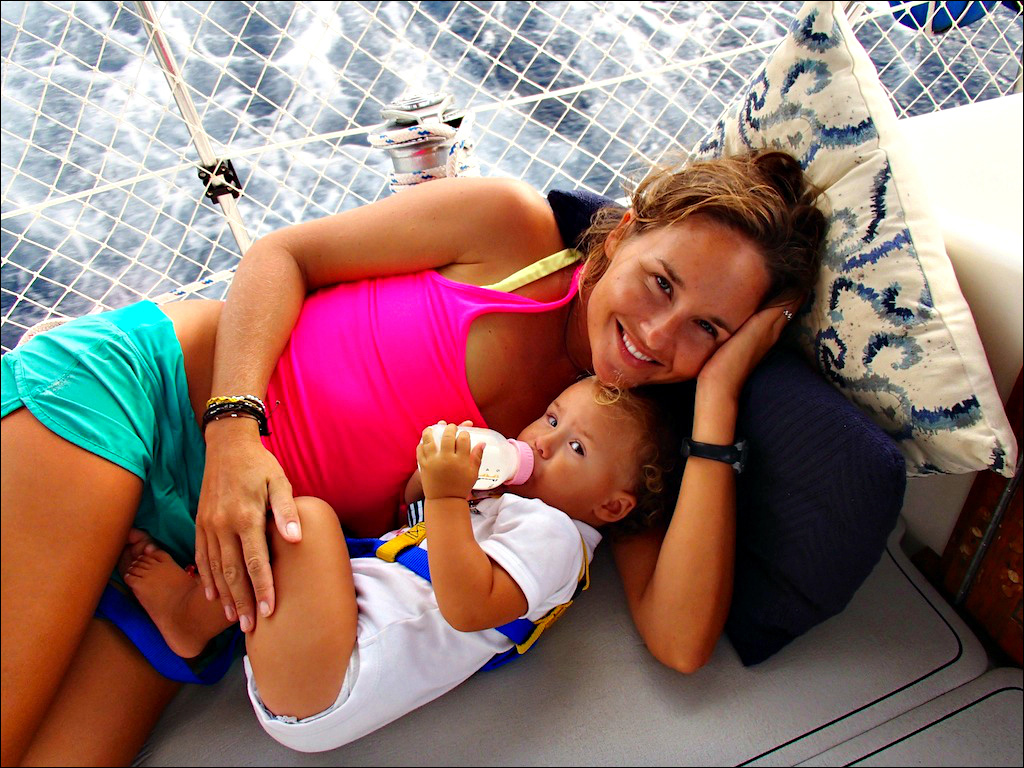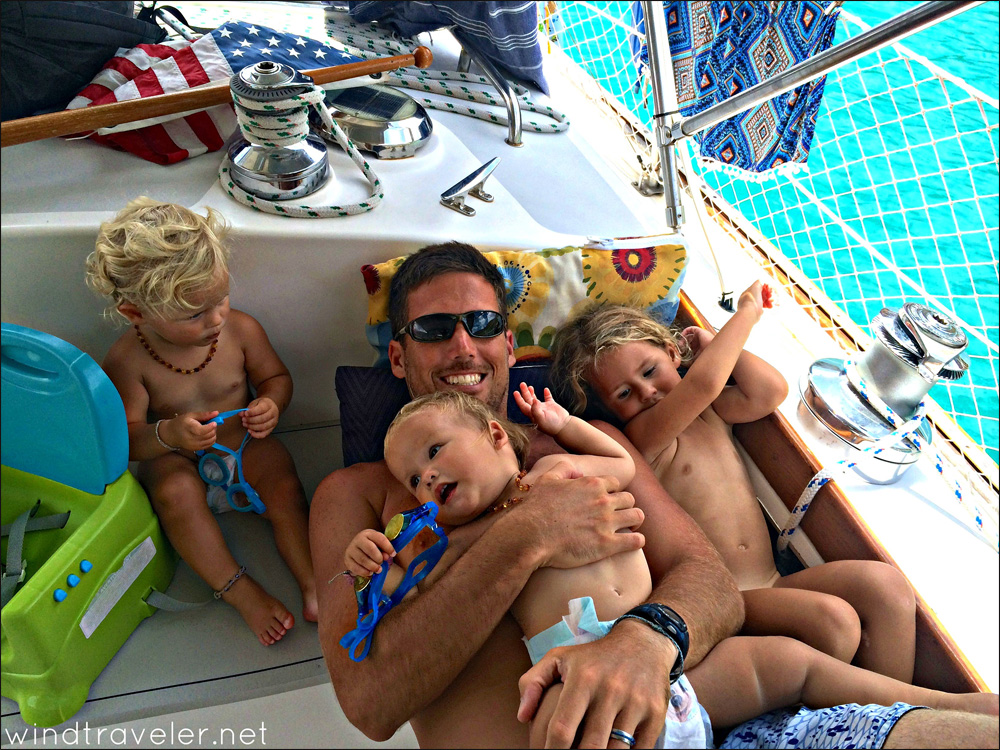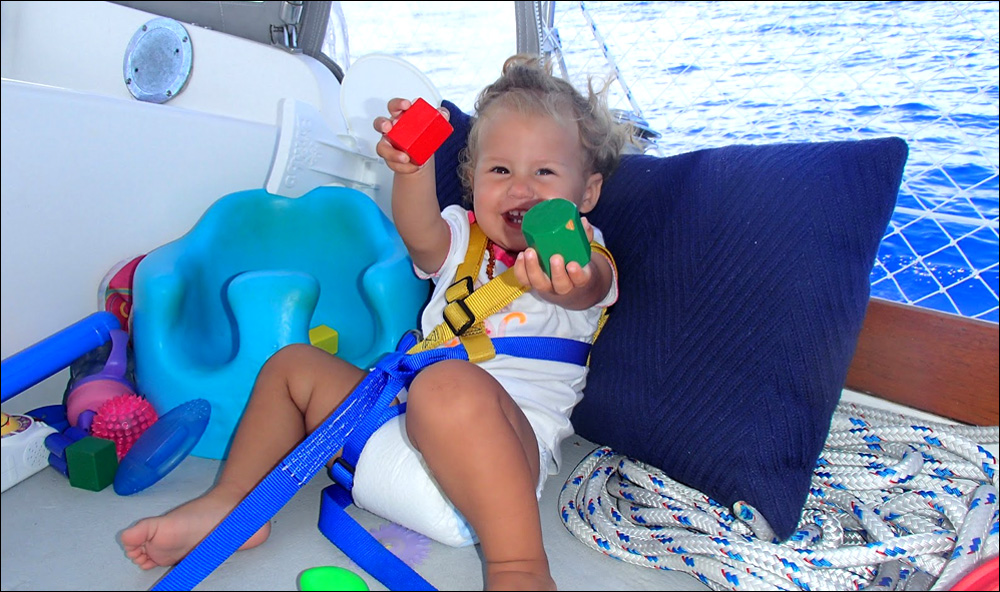2. How old were your children when you left? Is there a best age to take children cruising?
Scott and I didn't have kids when we began, which really worked out in our favor in terms of giving us a great base of cruising knowledge for when we did have kids. The full-time cruising life is a very steep learning curve so having gone through that before we had our kids was not necessarily the ‘plan' but it worked out to our advantage.
By the time we had kids we had very real expectation of how life would look with kids aboard and knew ahead of time the changes/concessions that we needed to make.
(See our post: Expectations, Experience and Equipment: A Recipe for Successful Cruising?) For example, that a bigger boat and one that was more set up for single handed sailing would be necessary (for us).
We brought our first daughter, Isla, aboard at 6 months and sailed over 5K nautical miles with her from Florida to Grenada (where we discovered we were pregnant with twins) and then back up to St. Maarten.
 |
Underway with Isla as an infant, 2013
|
We sailed up until my third trimester with the twins, after which we returned stateside to have our girls, Haven and Mira, due to the fact that twins are a ‘high risk' pregnancy.
We lived on land at my parent's house adjusting to life with three under three and brought them back to the boat in the British Virgin Islands at 10 months old. In terms of an ideal age - it's hard to say since we only have brought babies on board which, if you ask me, is a fantastic time to bring kids aboard. They are super portable, adaptable and - as long as they have mommy and daddy near - they are content.
When you bring kids aboard very young you are setting the bar at a certain level. I always say it's easier to start with less than to take things away. What I mean by that is that it's easier to start with less, than with more. For example, a kid who watches zero television, will protest a lot less to a television-free environment than a kid who is used to to watching three hours a day. Or toys, if your kids have a giant playroom in your basement now, they might have a hard time paring down and adjusting to life with far fewer playthings.
Our girls have very little (space/toys/scheduled activities…etc) compared to most land-based kids, but they know no different so it's no big deal to them to them - because we just don't have that stuff and never did.
I don't necessarily think there is such a thing as “ideal” time, every family is different and every child is different so I think this really depends on each unique situation.
That's not to say babies on boats are easy, because there are a lot of concessions a couple must make to accommodate for kids.
Nap and bedtimes must be considered, the boat must be baby-proofed, your time for boat chores/work/maintenance will be halved (or more), you must grow eyes in the back of your head and you will probably want to seek out other kid boats (to name a few).
With our first baby, we found cruising to be relatively easy - we did longer passages, sailed some aggressive miles and it was not difficult because our roles were very defined. I took care of all the baby duties and my husband sailed and maintained the boat. A 2:1 adult to child ratio is very doable on a boat.
Once the twins came aboard, this changed.
 |
Daddy and his girls decompress after lunch in the cockpit.
|
Being outnumbered by small babies made us “change tacks” as it were, and we decided we would stick to only one geographic area (BVI's) and do only day sails until the girls are older to make life easier.
(See more here: How's it Going with Three Small Kids on a Boat?).
It has worked great for us and we would not change a thing. |
